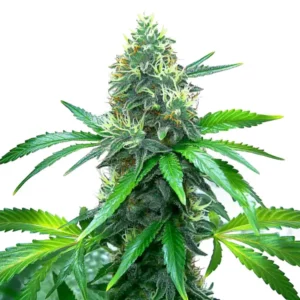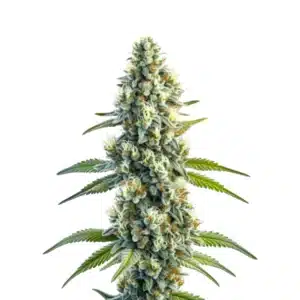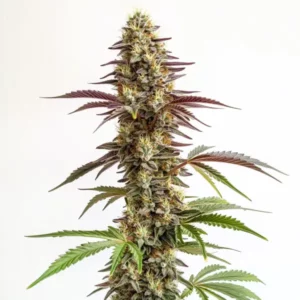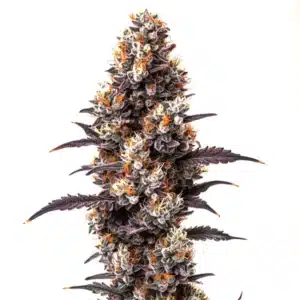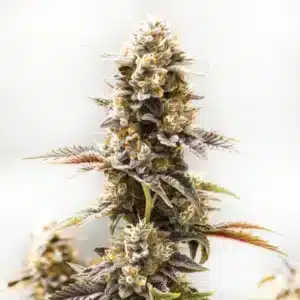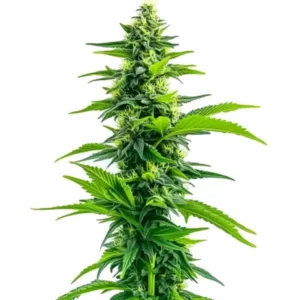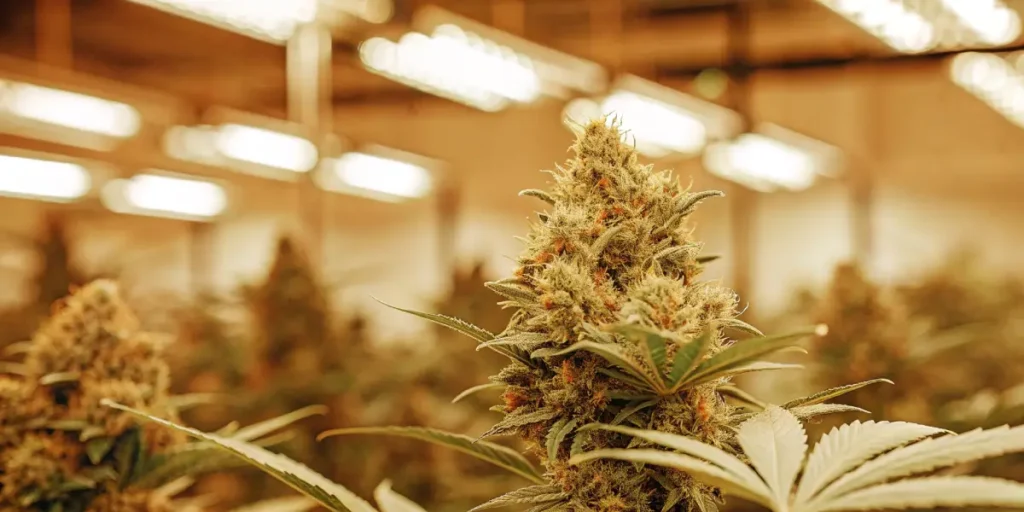
Impact of ROS on Cannabis Post-Harvest Quality
The impact of ROS on cannabis post-harvest quality is a crucial factor for both new and seasoned growers. ROS, or reactive oxygen species, are molecules that can cause oxidative stress in plants. This stress affects the quality of cannabis after it has been harvested. When you understand how these molecules work, you can store your cannabis in a way that maintains its quality.
Reactive oxygen species are naturally occurring in plants. They can play a dual role, acting as both beneficial and harmful agents. In the case of cannabis, ROS can lead to degradation of cannabinoids and terpenes. This degradation impacts the flavor, aroma, and potency of your cannabis. For example, the strain Zkittlez, with its fruity flavor profile, can lose its edge if ROS aren’t managed properly.
Recommended Strains
Proper storage techniques can mitigate the effects of reactive oxygen species on cannabis preservation. By controlling environmental factors such as light, temperature, and humidity, growers can slow down the oxidative processes. This careful management is particularly important for strains like Green Crack, known for its energetic effects. If not stored properly, the strain could lose its signature potency.
Effects of Reactive Oxygen Species on Cannabis Preservation
Reactive oxygen species can affect cannabis preservation in various ways. When cannabis is exposed to light and air, ROS levels can increase. This leads to faster degradation of THC and other cannabinoids. As a result, the therapeutic and psychoactive effects of your cannabis may diminish over time.
One practical way to reduce the influence of reactive oxygen species on cannabis quality is by using airtight containers. These containers limit the exposure of your cannabis to oxygen, thereby reducing the risk of oxidative stress. For example, the strain Blue Dream is popular for its balanced high. Keeping it in an airtight container will help maintain its unique profile.
Knowing the effects of reactive oxygen species on cannabis preservation is essential for maintaining the integrity of your product. The impact of ROS on cannabis post-harvest quality can be managed by taking specific measures that protect the delicate balance of cannabinoids and terpenes. This knowledge allows growers to better preserve the distinct characteristics of different strains over time.
Besides to using airtight containers, it’s important to consider the material of the container itself. Glass jars with tight-sealing lids are often recommended because they do not interact with cannabis compounds. This further minimizes the influence of reactive oxygen species on cannabis quality. By carefully selecting storage solutions, growers can ensure their product remains potent and enjoyable.
Role of ROS in Cannabis Storing Process
The role of ROS in cannabis storing process is significant. These molecules can accelerate the breakdown of important compounds in cannabis, such as THC and CBD. Over time, this breakdown results in a less potent product. For first-time buyers, knowing this process can help in selecting storage solutions that maintain their product’s quality.
Temperature control is another critical factor in managing ROS levels. High temperatures can increase the activity of reactive oxygen species, leading to quicker degradation. Storing cannabis in a cool, dark place can help control these effects. This is especially important for strains like OG Kush, which is valued for its strong effects. Proper storage will preserve its quality over time.
The role of ROS in cannabis storing process cannot be overstated. By recognizing the destructive potential of these molecules, growers can take preventative steps to safeguard their harvest. The impact of ROS on cannabis post-harvest quality is directly linked to how well the product is stored, making this an essential consideration for long-term preservation.
Incorporating technology into the storage process can further optimize results. Humidity control devices and temperature monitors can provide real-time data, allowing growers to make precise adjustments. This proactive approach minimizes the ROS impact on cannabis shelf life, ensuring that each strain retains its intended potency, flavor, and aroma.
Promos & Deals
Oxidative Stress Effects on Cannabis Post-Harvest
Oxidative stress effects on cannabis post-harvest can be quite severe if not managed properly. This stress can lead to a loss of flavor, aroma, and overall quality. By knowing how ROS work, you can take steps to minimize their impact.
One effective way to combat oxidative stress is by limiting light exposure. Light can increase the activity of reactive oxygen species, leading to faster degradation. Keeping your cannabis in a dark environment will help maintain its quality. This is particularly important for preserving the rich flavors of strains like Zkittlez.
Addressing oxidative stress effects on cannabis post-harvest is key to ensuring a high-quality product. The role of ROS in cannabis storing process highlights the need for strategic storage practices. By reducing exposure to elements that exacerbate oxidative stress, growers can protect the valuable attributes of their strains.
Another consideration is the timing of the harvest itself. Harvesting when cannabinoid levels are at their peak can reduce the subsequent impact of ROS on cannabis post-harvest quality. By selecting the optimal harvest window and using appropriate storage methods, growers can achieve a product that stands the test of time.
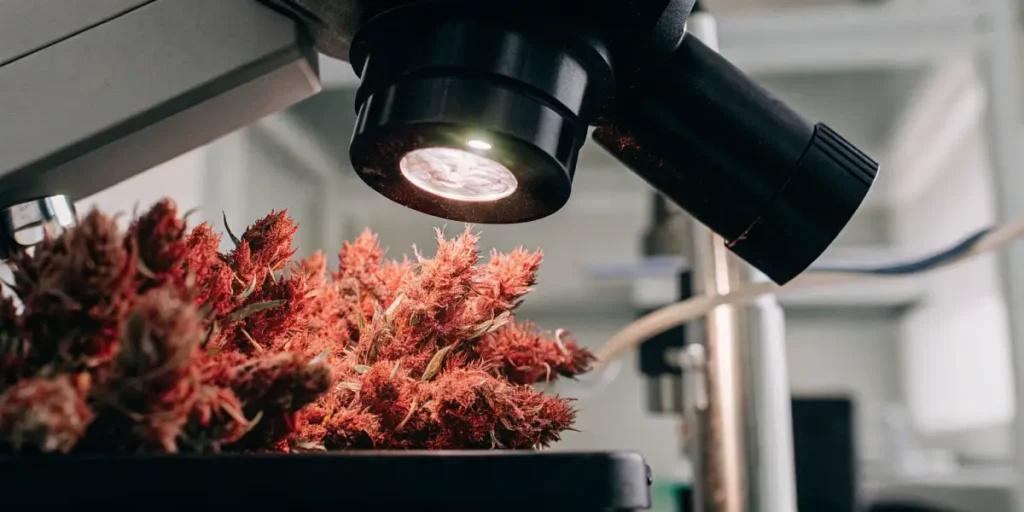
Practical Tips for Managing ROS Impact on Cannabis Shelf Life
To manage ROS impact on cannabis shelf life, consider the following practical tips. First, always store your cannabis in an airtight container. This limits exposure to oxygen and helps maintain quality. Second, keep your cannabis in a cool, dark place to reduce the activity of reactive oxygen species.
- Use airtight containers to limit oxygen exposure.
- Store cannabis in a cool, dark environment.
- Maintain optimal humidity levels with humidity packs.
By following these steps, you can ensure that your cannabis retains its potency and flavor for as long as possible. Remember, strains like Green Crack require careful handling to maintain their energetic effects. Proper storage is key to achieving this.
Besides to these tips, rotating your stock can help manage ROS impact on cannabis shelf life. Regularly using older stock before newer batches ensures that cannabis is consumed before oxidative stress effects become pronounced. This practice helps maintain the overall quality of your inventory.
Investing in quality storage equipment can also make a significant difference. Containers with UV protection can prevent light-induced ROS activity, while digital hygrometers provide accurate humidity readings. These tools aid in maintaining an environment that minimizes the influence of reactive oxygen species on cannabis quality.
FAQs
What are reactive oxygen species (ROS)?
Reactive oxygen species (ROS) are molecules that can cause oxidative stress in plants, including cannabis. These molecules are naturally occurring and can be both beneficial and harmful. In the context of cannabis, ROS can lead to the degradation of key compounds, affecting quality.
Knowing ROS is important for anyone interested in cannabis cultivation. By managing environmental factors like light and temperature, you can minimize the impact of ROS on your cannabis, preserving its quality and potency over time.
The impact of ROS on cannabis post-harvest quality is a vital consideration for maintaining a product’s integrity. Educating yourself about the nature of ROS allows for informed decisions that enhance the storing process, ultimately leading to a more satisfying consumer experience.
While ROS have the potential to degrade cannabis quality, they are also a natural part of the plant’s life cycle. By striking a balance between acknowledging their presence and mitigating their effects, growers can optimize the quality of their harvest.
How do I store cannabis to minimize oxidative stress?
To minimize oxidative stress in cannabis, store it in an airtight container. This helps reduce exposure to oxygen, which can increase ROS activity. Additionally, keep your cannabis in a cool, dark place to further limit oxidative stress.
Proper storage is crucial for maintaining the quality of your cannabis. By controlling factors like light, temperature, and humidity, you can ensure that your cannabis remains potent and flavorful, no matter the strain.
Knowing the effects of reactive oxygen species on cannabis preservation is essential for effective storage. Implementing a strategy that addresses these factors can significantly extend cannabis shelf life, preserving its effectiveness for future use.
Adopting a methodical approach to storage will also prevent unnecessary waste. By maintaining ideal conditions, you not only protect the product’s quality but also maximize your investment in each strain, ensuring long-term satisfaction.
Which cannabis strains are more susceptible to ROS impact?
All cannabis strains can be affected by ROS, but those with high terpene content, like Zkittlez and Blue Dream, may be more susceptible. Terpenes are sensitive to oxidative stress, which can lead to a loss of flavor and aroma.
To protect these strains, it’s important to follow proper storage guidelines. By doing so, you can preserve the unique characteristics that make these strains popular among both new and experienced cannabis users.
Recognizing the role of ROS in cannabis storing process allows growers to tailor their storage methods to the specific needs of each strain. This personalized approach helps maintain the distinct profile of each variety, ensuring a consistent experience for users.
For strains with particularly high terpene levels, additional measures, such as enhanced UV protection, can be employed. These extra steps further reduce the ROS impact on cannabis shelf life, safeguarding the unique properties of each strain.
Can humidity affect ROS levels in stored cannabis?
Yes, humidity can significantly affect ROS levels in stored cannabis. High humidity can promote mold growth, which exacerbates oxidative stress. Conversely, low humidity can dry out cannabis, leading to a loss of potency.
To maintain the ideal moisture level, consider using humidity packs. These packs can help manage the humidity in your storage environment, ensuring that your cannabis remains fresh and potent for longer periods.
The influence of reactive oxygen species on cannabis quality is closely tied to environmental conditions. Maintaining balanced humidity levels is crucial for minimizing oxidative stress effects on cannabis post-harvest, thereby preserving its inherent qualities.
Monitoring humidity levels regularly and making timely adjustments can prevent the adverse effects associated with both high and low humidity. This vigilant approach to storage ensures that your cannabis remains in peak condition throughout its shelf life.
What steps can I take to preserve cannabis quality post-harvest?
To preserve cannabis quality post-harvest, focus on controlling environmental factors. Use airtight containers, maintain a cool and dark storage area, and manage humidity levels with humidity packs. These steps will help reduce ROS activity.
By taking these precautions, you can ensure that your cannabis retains its potency, flavor, and aroma. Whether you are storing Green Crack or OG Kush, proper storage is key to long-lasting quality.
The impact of ROS on cannabis post-harvest quality can be minimized through a comprehensive storage strategy. By knowing the function of ROS in cannabis storing process, you can implement effective practices that preserve the integrity of your product.
Continual education and adaptation to new storage technologies can further enhance your ability to combat oxidative stress effects on cannabis post-harvest. Staying informed about the latest advancements ensures that you are always equipped to maintain the highest quality in your cannabis products.



